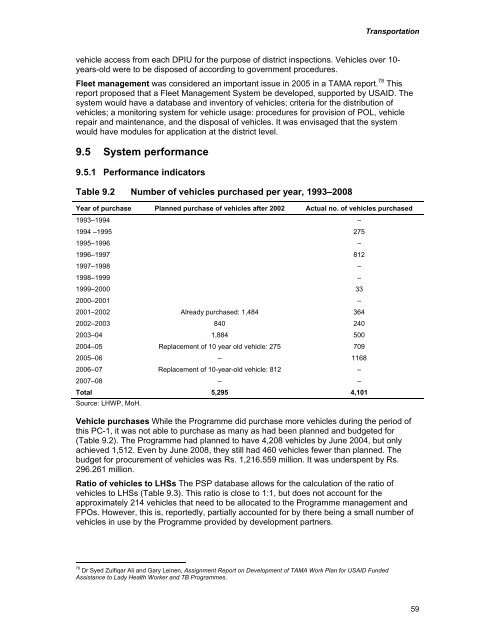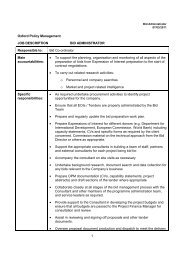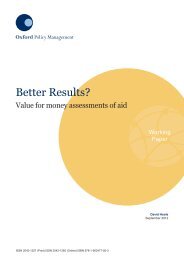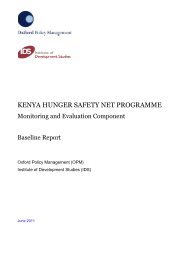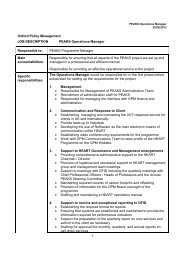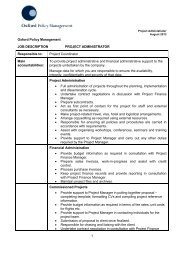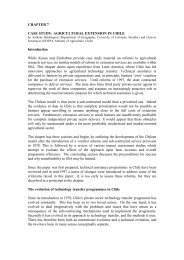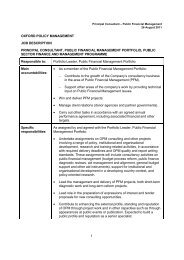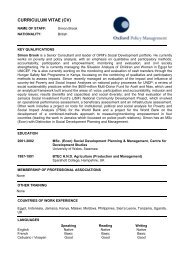LHW Systems Review - Oxford Policy Management
LHW Systems Review - Oxford Policy Management
LHW Systems Review - Oxford Policy Management
You also want an ePaper? Increase the reach of your titles
YUMPU automatically turns print PDFs into web optimized ePapers that Google loves.
Transportationvehicle access from each DPIU for the purpose of district inspections. Vehicles over 10-years-old were to be disposed of according to government procedures.Fleet management was considered an important issue in 2005 in a TAMA report. 78 Thisreport proposed that a Fleet <strong>Management</strong> System be developed, supported by USAID. Thesystem would have a database and inventory of vehicles; criteria for the distribution ofvehicles; a monitoring system for vehicle usage: procedures for provision of POL, vehiclerepair and maintenance, and the disposal of vehicles. It was envisaged that the systemwould have modules for application at the district level.9.5 System performance9.5.1 Performance indicatorsTable 9.2 Number of vehicles purchased per year, 1993–2008Year of purchase Planned purchase of vehicles after 2002 Actual no. of vehicles purchased1993–1994 –1994 –1995 2751995–1996 –1996–1997 8121997–1998 –1998–1999 –1999–2000 332000–2001 –2001–2002 Already purchased: 1,484 3642002–2003 840 2402003–04 1,884 5002004–05 Replacement of 10 year old vehicle: 275 7092005–06 – 11682006–07 Replacement of 10-year-old vehicle: 812 –2007–08 – –Total 5,295 4,101Source: <strong>LHW</strong>P, MoH.Vehicle purchases While the Programme did purchase more vehicles during the period ofthis PC-1, it was not able to purchase as many as had been planned and budgeted for(Table 9.2). The Programme had planned to have 4,208 vehicles by June 2004, but onlyachieved 1,512. Even by June 2008, they still had 460 vehicles fewer than planned. Thebudget for procurement of vehicles was Rs. 1,216.559 million. It was underspent by Rs.296.261 million.Ratio of vehicles to LHSs The PSP database allows for the calculation of the ratio ofvehicles to LHSs (Table 9.3). This ratio is close to 1:1, but does not account for theapproximately 214 vehicles that need to be allocated to the Programme management andFPOs. However, this is, reportedly, partially accounted for by there being a small number ofvehicles in use by the Programme provided by development partners.78Dr Syed Zulfiqar Ali and Gary Leinen, Assignment Report on Development of TAMA Work Plan for USAID FundedAssistance to Lady Health Worker and TB Programmes.59


